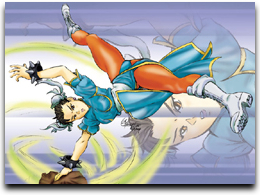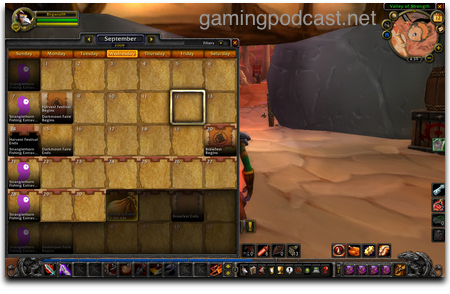 In 1987, Capcom created a new winner with the Street Fighter series. Knowing the demographic, they went for teenage boys with the desire to play fighting games in the arcade in competitive fashion. But is a good fighting game without some eye candy?
In 1987, Capcom created a new winner with the Street Fighter series. Knowing the demographic, they went for teenage boys with the desire to play fighting games in the arcade in competitive fashion. But is a good fighting game without some eye candy?
Chun-Li was the star, with her Spinning Bird Kick. Actually, Chun-Li never saw the first Street Fighter title… only Ken and Ryu (mainly Ryu) were available in the first series installment. This got our taste wet for battle, and Street Fighter II introduced us to a whole range of great moves and character designs.
Out of all the characters, Chun-Li held her own as a cute skinny yet muscular female with moves like no other. Her Spinning Bird Kick would allow her to flip upside down and whack the opponent upside the head a few times as they fall to their back on the stone.
Chun-Li, or “spring beauty” in Mandarin, was famous for her sexy anime legs and their spinning doom. Gamers would perform the move that the worse possible time for their opponent, such as in mid-jump when your opponent had nothing but death and peril awaiting their landing.
Ken and Ryu had spinning kicks too, but without the inverted impossible moves of Chun-Li it fell short of awesome. When it comes to animated violence, perceived hot chicks and young boys battling for ego and rights to be the winner, the Spinning Bird Kick and Chung-Li was a great choice.
The British rock band Arctic Monkeys have an instrumental song titled “Chun Li’s Spinning Bird Kick” and was nominated for a Grammy for Best Rock Instrumental Performance (wikipedia).
It does without doubt, every Street Fighter II player remembers the crazy spinning kicks of Chun-Li and this is what makes her have retro gaming moves!

 The long awaited Wrath of the Lich King is here! By long awaited, really, I mean, I waited a long time to get patch after patch of the next expansion to Blizzards best of MMORPG. Although I don’t know the architecture to creating the patches, it seems so dated in methodology. Why must I download 5GB of patches when one can just supply me with an option to pull everything.
The long awaited Wrath of the Lich King is here! By long awaited, really, I mean, I waited a long time to get patch after patch of the next expansion to Blizzards best of MMORPG. Although I don’t know the architecture to creating the patches, it seems so dated in methodology. Why must I download 5GB of patches when one can just supply me with an option to pull everything.
 While Sony and Microsoft one-up each other with fire sales on old hardware and blockbuster titles like Gears of War 2 and Resistance 2, Nintendo goes for something completely different… older people.
While Sony and Microsoft one-up each other with fire sales on old hardware and blockbuster titles like Gears of War 2 and Resistance 2, Nintendo goes for something completely different… older people.